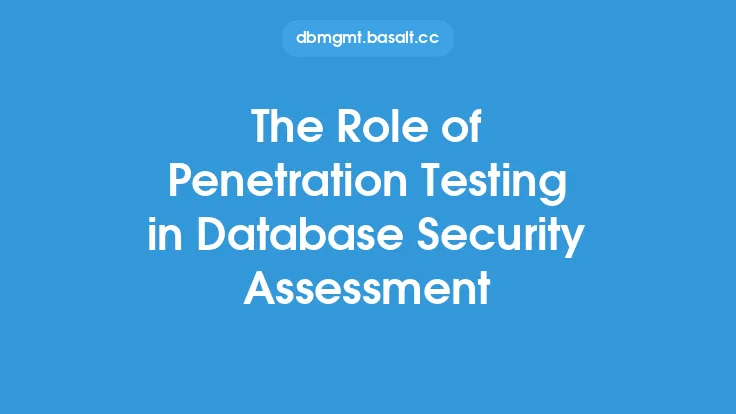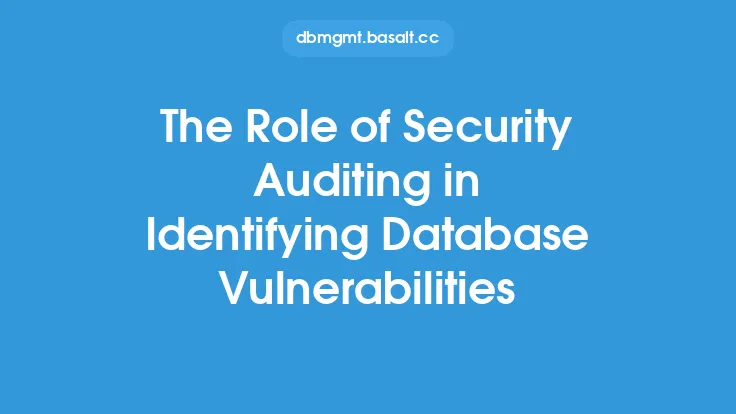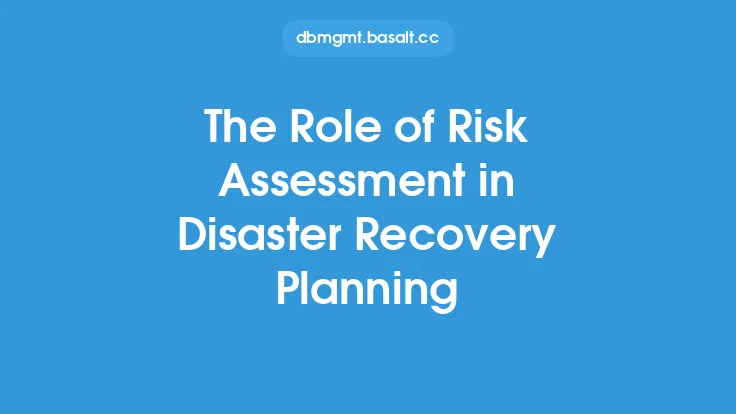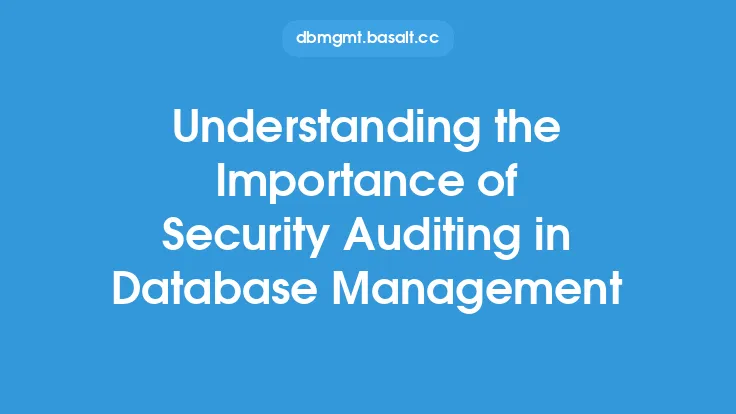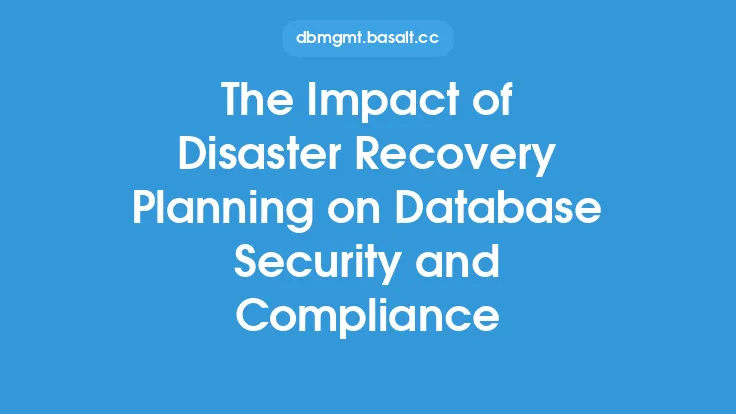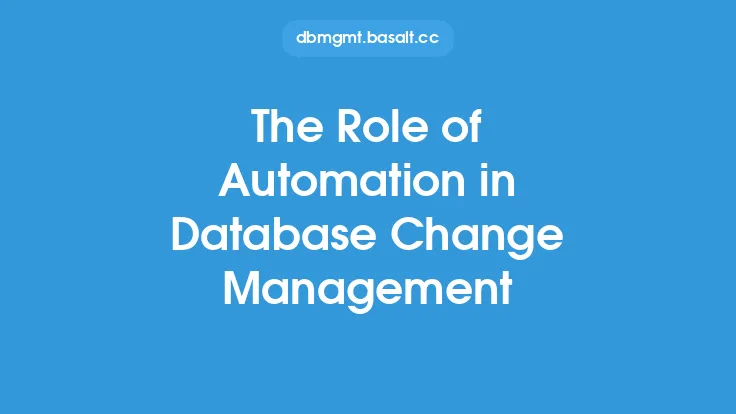Database security is a critical aspect of any organization's overall information security strategy. With the increasing reliance on databases to store and manage sensitive data, the risk of data breaches and cyber attacks has also increased. One of the key components of database security planning is vulnerability assessment, which plays a crucial role in identifying and mitigating potential security threats. In this article, we will delve into the role of vulnerability assessment in database security planning, its importance, and the benefits it provides.
Introduction to Vulnerability Assessment
Vulnerability assessment is the process of identifying, classifying, and prioritizing vulnerabilities in a database system. It involves scanning the database for potential security weaknesses, such as outdated software, misconfigured settings, and insecure coding practices. The goal of vulnerability assessment is to identify potential entry points that an attacker could exploit to gain unauthorized access to the database or disrupt its operation. By identifying these vulnerabilities, organizations can take proactive measures to remediate them, reducing the risk of a data breach or other security incident.
Types of Vulnerabilities
There are several types of vulnerabilities that can affect a database system, including:
- Configuration vulnerabilities: These occur when the database is not properly configured, leaving it open to attack. Examples include weak passwords, outdated software, and misconfigured firewalls.
- Code vulnerabilities: These occur when the database code contains flaws or weaknesses that can be exploited by an attacker. Examples include SQL injection and cross-site scripting (XSS) vulnerabilities.
- Network vulnerabilities: These occur when the network on which the database resides is not properly secured, leaving it open to attack. Examples include unsecured Wi-Fi networks and weak network passwords.
- Data vulnerabilities: These occur when the data stored in the database is not properly secured, leaving it open to unauthorized access. Examples include unencrypted data and weak access controls.
The Vulnerability Assessment Process
The vulnerability assessment process typically involves the following steps:
- Planning and preparation: This involves identifying the scope of the assessment, gathering information about the database system, and determining the assessment methodology.
- Vulnerability scanning: This involves using automated tools to scan the database system for potential vulnerabilities.
- Vulnerability analysis: This involves analyzing the scan results to identify and classify vulnerabilities.
- Risk assessment: This involves assessing the risk associated with each identified vulnerability and prioritizing them for remediation.
- Remediation: This involves taking corrective action to remediate identified vulnerabilities.
- Verification: This involves verifying that the remediation efforts have been successful and that the vulnerabilities have been mitigated.
Benefits of Vulnerability Assessment
Vulnerability assessment provides several benefits, including:
- Improved security posture: By identifying and remediating vulnerabilities, organizations can improve their overall security posture and reduce the risk of a data breach or other security incident.
- Compliance: Vulnerability assessment can help organizations comply with regulatory requirements and industry standards, such as PCI DSS and HIPAA.
- Reduced risk: By identifying and remediating vulnerabilities, organizations can reduce the risk of a data breach or other security incident.
- Cost savings: Vulnerability assessment can help organizations avoid the costs associated with a data breach or other security incident, such as notification and remediation costs.
Tools and Techniques
There are several tools and techniques available to support vulnerability assessment, including:
- Vulnerability scanners: These are automated tools that scan the database system for potential vulnerabilities.
- Penetration testing: This involves simulating an attack on the database system to test its defenses and identify vulnerabilities.
- Configuration compliance scanners: These are automated tools that scan the database system for configuration vulnerabilities.
- Code review: This involves manually reviewing the database code to identify potential vulnerabilities.
Best Practices
To get the most out of vulnerability assessment, organizations should follow best practices, including:
- Regularly schedule vulnerability assessments: Vulnerability assessments should be performed on a regular basis to ensure that the database system remains secure.
- Use a combination of tools and techniques: A combination of tools and techniques should be used to support vulnerability assessment, including vulnerability scanners, penetration testing, and code review.
- Prioritize remediation efforts: Remediation efforts should be prioritized based on the risk associated with each identified vulnerability.
- Continuously monitor the database system: The database system should be continuously monitored for potential security incidents and vulnerabilities.
Conclusion
In conclusion, vulnerability assessment plays a critical role in database security planning. By identifying and remediating potential security vulnerabilities, organizations can improve their overall security posture, reduce the risk of a data breach or other security incident, and comply with regulatory requirements and industry standards. By following best practices and using a combination of tools and techniques, organizations can ensure that their database system remains secure and protected from potential threats.
